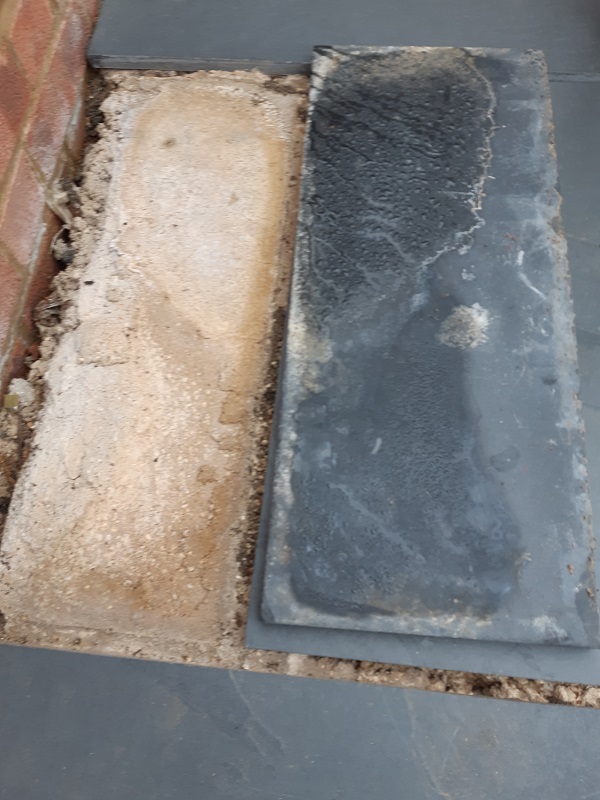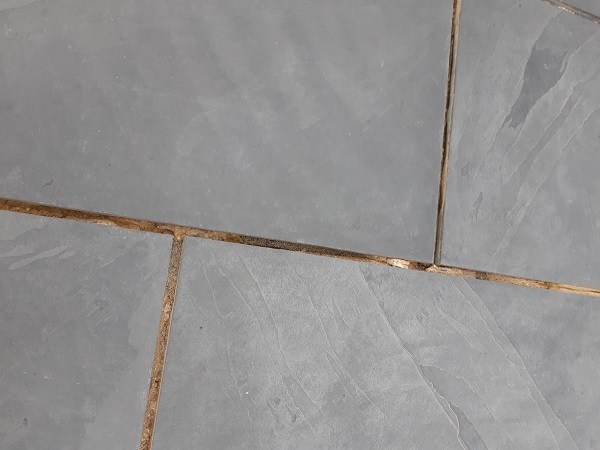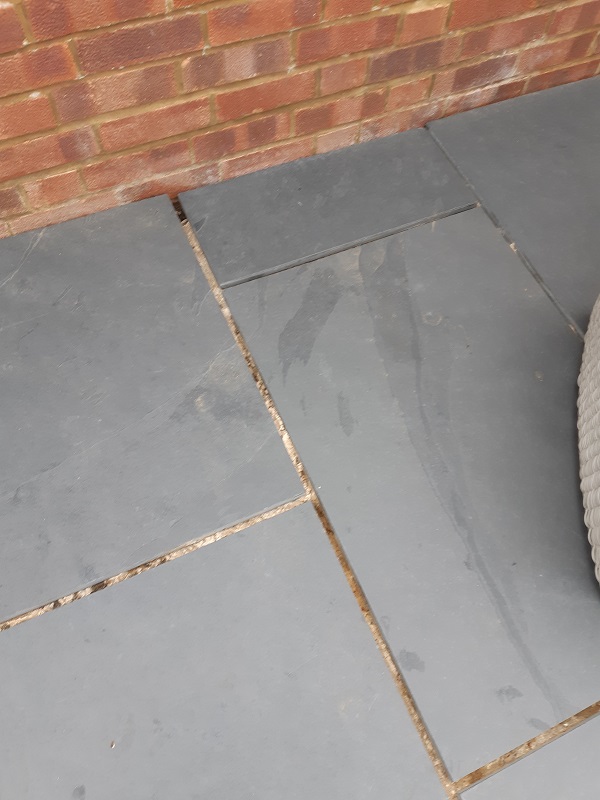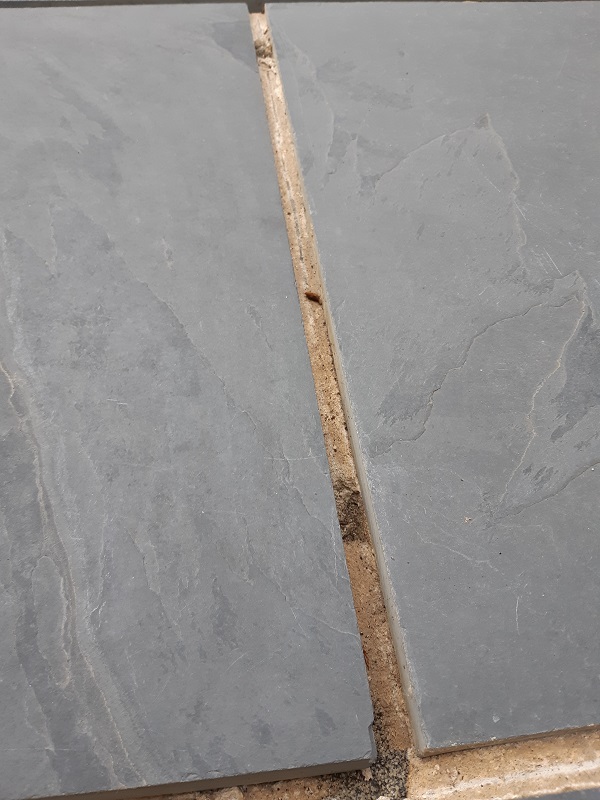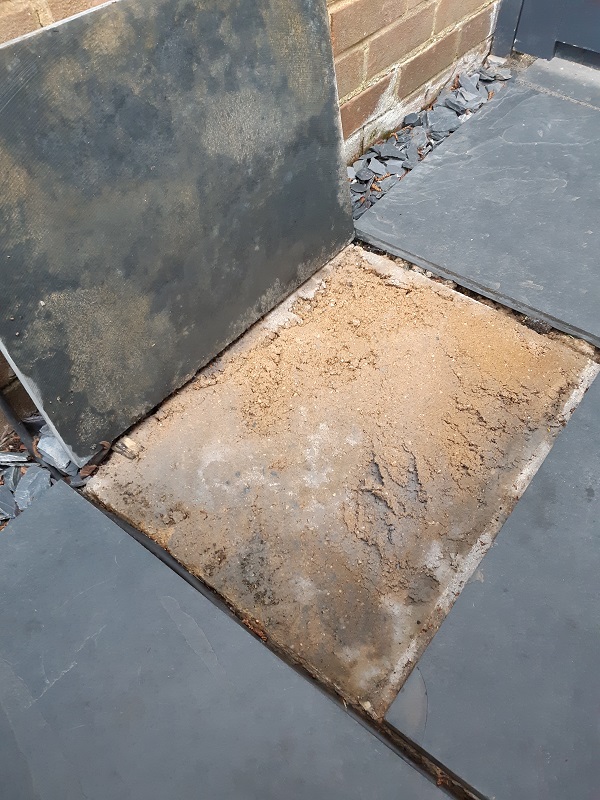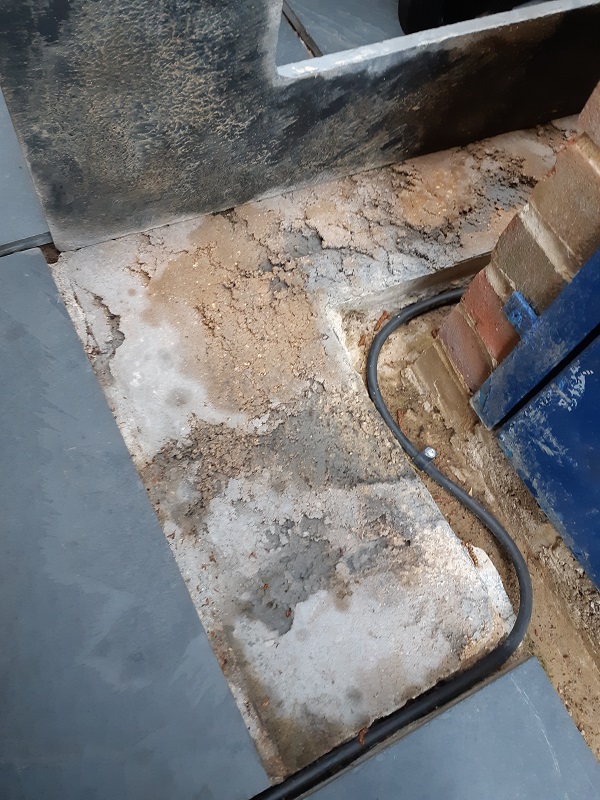Some photos of slate patio problems
-
failed0144
- Posts: 11
- Joined: Tue Apr 28, 2020 4:10 am
- Location: Bucks
-
failed0144
- Posts: 11
- Joined: Tue Apr 28, 2020 4:10 am
- Location: Bucks
-
Tony McC
- Site Admin
- Posts: 8346
- Joined: Mon Jul 05, 2004 7:27 pm
- Location: Warrington, People's Republic of South Lancashire
- Contact:
-
Bob_A
- Posts: 861
- Joined: Wed Feb 27, 2008 9:30 pm
- Location: SE London/ NW Kent
Even when I cut and paste https://photos.google.com/photo/20200504_063234.jpg into my browser it doesn't work.
Maybe he can see them 'cos he logged into his google account but we can't as we are not?
Maybe he can see them 'cos he logged into his google account but we can't as we are not?
-
failed0144
- Posts: 11
- Joined: Tue Apr 28, 2020 4:10 am
- Location: Bucks
-
Tony McC
- Site Admin
- Posts: 8346
- Joined: Mon Jul 05, 2004 7:27 pm
- Location: Warrington, People's Republic of South Lancashire
- Contact:
-
failed0144
- Posts: 11
- Joined: Tue Apr 28, 2020 4:10 am
- Location: Bucks
Above are the pics of some of the issues with our slate patio.
There are 3 of loose slabs, so the underside can be seen and what possibly has caused them to fail.
The other 3 are of the joints, after the defective Easyjoint was removed. Some are overfilled with mortar, so the minimum 25mm of Easyjoint could never be achieved. Others are much deeper but the bed looks really dry, hence why the mortar has not squidged up through the joints ??
Some of the slabs sound hollow or make a tapping noise when hit gently with a rubber mallet at one end, the other end sounds solid. The loose ones, of course, just make a tapping noise and are rocking or moving. There are a lot of voids that can be seen under the slabs when you look into the joints.
A fuller story can be read on my other posts on this page.
I would really appreciate any constructive comments as to the reasons why things have failed, based on what you can see in the pics.
Thanks, guys
There are 3 of loose slabs, so the underside can be seen and what possibly has caused them to fail.
The other 3 are of the joints, after the defective Easyjoint was removed. Some are overfilled with mortar, so the minimum 25mm of Easyjoint could never be achieved. Others are much deeper but the bed looks really dry, hence why the mortar has not squidged up through the joints ??
Some of the slabs sound hollow or make a tapping noise when hit gently with a rubber mallet at one end, the other end sounds solid. The loose ones, of course, just make a tapping noise and are rocking or moving. There are a lot of voids that can be seen under the slabs when you look into the joints.
A fuller story can be read on my other posts on this page.
I would really appreciate any constructive comments as to the reasons why things have failed, based on what you can see in the pics.
Thanks, guys
failed0144
-
dig dug dan
- Posts: 2504
- Joined: Thu Jul 10, 2003 10:20 pm
- Location: hemel hempstead,herts. 01442 212315
I have never had easijoint fail, so as you say, the correct depth was not achieved.
The other big problem is that clesrly no bond bridge was used to bed the slabs, and it's even more crucial to do this on slate paving.
Its another Rip up and relay job I'm afraid
The other big problem is that clesrly no bond bridge was used to bed the slabs, and it's even more crucial to do this on slate paving.
Its another Rip up and relay job I'm afraid
Dan the Crusher Man
01442 212315
www.crusherhire.co.uk
"a satisfied customer? we should have them stuffed!"
01442 212315
www.crusherhire.co.uk
"a satisfied customer? we should have them stuffed!"
-
failed0144
- Posts: 11
- Joined: Tue Apr 28, 2020 4:10 am
- Location: Bucks
Thanks, Dan, for replying. Easyjoint told me that, as well as the correct depth being observed, sealing with the Wickes product containing Xylene only a day after jointing when everything was still wet, and then using Xylene solvent thinners to remove the defective sealer, has broken down the Easyjoint.
What a nightmare !!!
What a nightmare !!!
failed0144
-
Tony McC
- Site Admin
- Posts: 8346
- Joined: Mon Jul 05, 2004 7:27 pm
- Location: Warrington, People's Republic of South Lancashire
- Contact:
Slate is, to all intents and purposes, impermeable, and therefore, as with porcelain, a bond bridge slury promer is *essential* to ensure the paving adheres to the bedding mortar. That hasn't happened here and it is the main cause of the problems observed.
The EasyJoint is a side issue. You can't rely on jointing to hold paving in place unless it is a joint-dependent form of paving, such as setts or cubes. Flagstones are bed-dependent.
So, while the EasyJoint may have failed due to being of inadequate depth, and then being abused with spectacularly poor quality sealants and thinners, it is not the source of the problem. This paving would have failed whether you had omitted the sealnt/thinners nonsense, whether you had the minimum required depth of EasyJoint, or whether you had used a completely different jointing material. The failure to form a bond between paving and bedding is the cause of the failure.
The EasyJoint is a side issue. You can't rely on jointing to hold paving in place unless it is a joint-dependent form of paving, such as setts or cubes. Flagstones are bed-dependent.
So, while the EasyJoint may have failed due to being of inadequate depth, and then being abused with spectacularly poor quality sealants and thinners, it is not the source of the problem. This paving would have failed whether you had omitted the sealnt/thinners nonsense, whether you had the minimum required depth of EasyJoint, or whether you had used a completely different jointing material. The failure to form a bond between paving and bedding is the cause of the failure.
Site Agent - Pavingexpert
-
failed0144
- Posts: 11
- Joined: Tue Apr 28, 2020 4:10 am
- Location: Bucks
Thanks, again, Tony and Dan for your advice.
65million dollar question is:
If the slabs are all lifted, this will leave the mortar bed which has some high areas due to the mortar squidging up through the joints. If these areas were chiseled flat with the rest of the bed, would the bond bridge work with the existing bed or would that have to come out and a new mortar bed be laid ?
The back of the slabs were painted with pva. Will this affect the bond between mortar base and slabs when SBR slurry is used ?
Thanks, guys.
65million dollar question is:
If the slabs are all lifted, this will leave the mortar bed which has some high areas due to the mortar squidging up through the joints. If these areas were chiseled flat with the rest of the bed, would the bond bridge work with the existing bed or would that have to come out and a new mortar bed be laid ?
The back of the slabs were painted with pva. Will this affect the bond between mortar base and slabs when SBR slurry is used ?
Thanks, guys.
failed0144
-
dig dug dan
- Posts: 2504
- Joined: Thu Jul 10, 2003 10:20 pm
- Location: hemel hempstead,herts. 01442 212315
I recently pulled up an area of paving , laid on a full,bed, about 2 years ago, by some so called paving experts. They had laid a random pattern, but managed to do it in such a way, they had thin slivers of slabs, cuts in the middle, and pointed using riverwash sand and very little cement.
Their epic fail was no bind bridge. Ironically, I had priced the job for the customer and he went with this crowd. It cost him dear as he had to also but buy more slabs!
Digressing aside, I was able to chisel off the mortar that had squeezed up between the joints using a shovel as it was so soft, and as there was no issue with damp course, lay a minimal bed in top of what was there, and re lay, using a bondbridge
You cannot simply paint it on and just stick them down to the old bedding layer, you will have to use a mortar again.
The pva would have done nothing, and being water based, all but dissapeared by now. Make sure if you re bed onto existing layers, make the mix stronger than what it was before
Their epic fail was no bind bridge. Ironically, I had priced the job for the customer and he went with this crowd. It cost him dear as he had to also but buy more slabs!
Digressing aside, I was able to chisel off the mortar that had squeezed up between the joints using a shovel as it was so soft, and as there was no issue with damp course, lay a minimal bed in top of what was there, and re lay, using a bondbridge
You cannot simply paint it on and just stick them down to the old bedding layer, you will have to use a mortar again.
The pva would have done nothing, and being water based, all but dissapeared by now. Make sure if you re bed onto existing layers, make the mix stronger than what it was before
Dan the Crusher Man
01442 212315
www.crusherhire.co.uk
"a satisfied customer? we should have them stuffed!"
01442 212315
www.crusherhire.co.uk
"a satisfied customer? we should have them stuffed!"
-
failed0144
- Posts: 11
- Joined: Tue Apr 28, 2020 4:10 am
- Location: Bucks
Well.......as if bad couldn't get any worse......contractors are adamant that removal of the defective sealant is what has caused the problems. As my wife asked them to remove it, they are laying the blame with her, despite directing them to all the expert opinions from this forum(thank you, guys ), from Easyjoint and Xylene manufacturers. They have denied all responsibility and their conclusion is... "we have to agree to disagree" !!!
failed0144
-
Tony McC
- Site Admin
- Posts: 8346
- Joined: Mon Jul 05, 2004 7:27 pm
- Location: Warrington, People's Republic of South Lancashire
- Contact:
